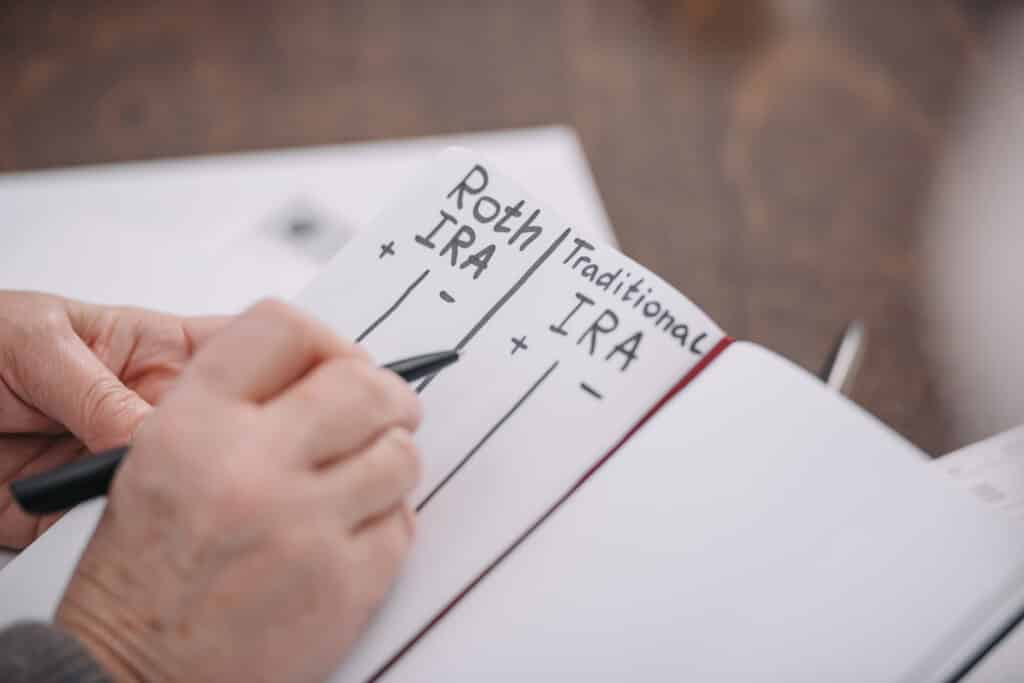All of us think about the future — but have you contemplated which way you plan to save for yours? Individual retirement accounts, or IRAs, are one of the most popular ways to accrue money for life after work. With a number of types available, it’s important to learn which one might be most advantageous for you.
What is an IRA?
All individual retirement accounts function as savings plans, accruing money as you invest in stocks, bonds, and mutual funds. Your workplace may offer IRA options – but even if they do not, you can also open one for yourself. All IRA types are individually held, which means that you can’t hold a joint account with your spouse or open one with your kids.
No matter which type of IRA you choose, you can contribute up to $6,500 ($7,500 if you’re age 50 or older) in 2023.1 By investing that contribution into stocks, bonds, or mutual funds, you can grow your investment over time. And by contributing, you could qualify for a tax credit of up to $1,000.2 If you want to open an IRA, you can do this through your bank, a stockbroker or mutual fund, or a life insurance company.
IRA Types
Traditional IRA
A traditional IRA is a tax-deferred account, meaning that you can deduct your contributions from the current tax year, but you will be taxed when funds are accessed after retirement. This is advantageous for those whose retirement income is projected to be less than their working income, because you’ll only have to pay the tax rate for your retirement income bracket. Traditional IRAs can lower your annual taxable income, grow on a tax-deferred basis, and set many retirees up for success.
Roth IRA
A Roth IRA is a tax-exempt account, which means that you’ll contribute with after-tax dollars, and you will not be taxed when you withdraw your money after retirement. A Roth IRA does have income limits and contribution limits,3 so not everyone qualifies, but it’s still an appealing option to many. If your retirement income is expected to be higher than your current income, this is an option worth considering.
Employer IRAs
Some companies offer IRAs to their employees in addition to 401(k) plans. While 401(k) accounts are opened through your employer, Employer IRAs are still opened individually, although your company may offer direct deductions from your paycheck or other savings incentives as you contribute. Employer IRAs include Payroll Deduction IRA plans, SEP – Simplified Employee Pension plans, SIMPLE IRA plans – Savings Incentive Match Plan for Employees, and SARSEP – the Salary Reduction Simplified Employee Pension Plan. You can chat with your employer about the options available to you.
Changing IRA Types
It’s possible to convert a traditional IRA into a Roth IRA, and some high-income earners may choose to do so. If you currently exceed Roth IRA income limits, converting your traditional IRA into a Roth IRA can help you secure the kind of retirement account you want. As Investopedia explains, “The backdoor Roth IRA strategy is not a tax dodge—in fact, it may incur higher taxes when it’s established—but you’ll get the future tax savings of a Roth account.”4
If you want to start or grow your individual retirement account, we’d love to help you build wealth for a secure future after your career is behind you. Contact a SageSpring advisor today to learn about your IRA options.
The foregoing information has been obtained from sources considered to be reliable, but we do not guarantee that it is accurate or complete, it is not a statement of all available data necessary for making an investment decision, and it does not constitute a recommendation. Any opinions are those of SageSpring Wealth Partners and not necessarily those of Raymond James. Expressions of opinion are as of this date and are subject to change without notice.

